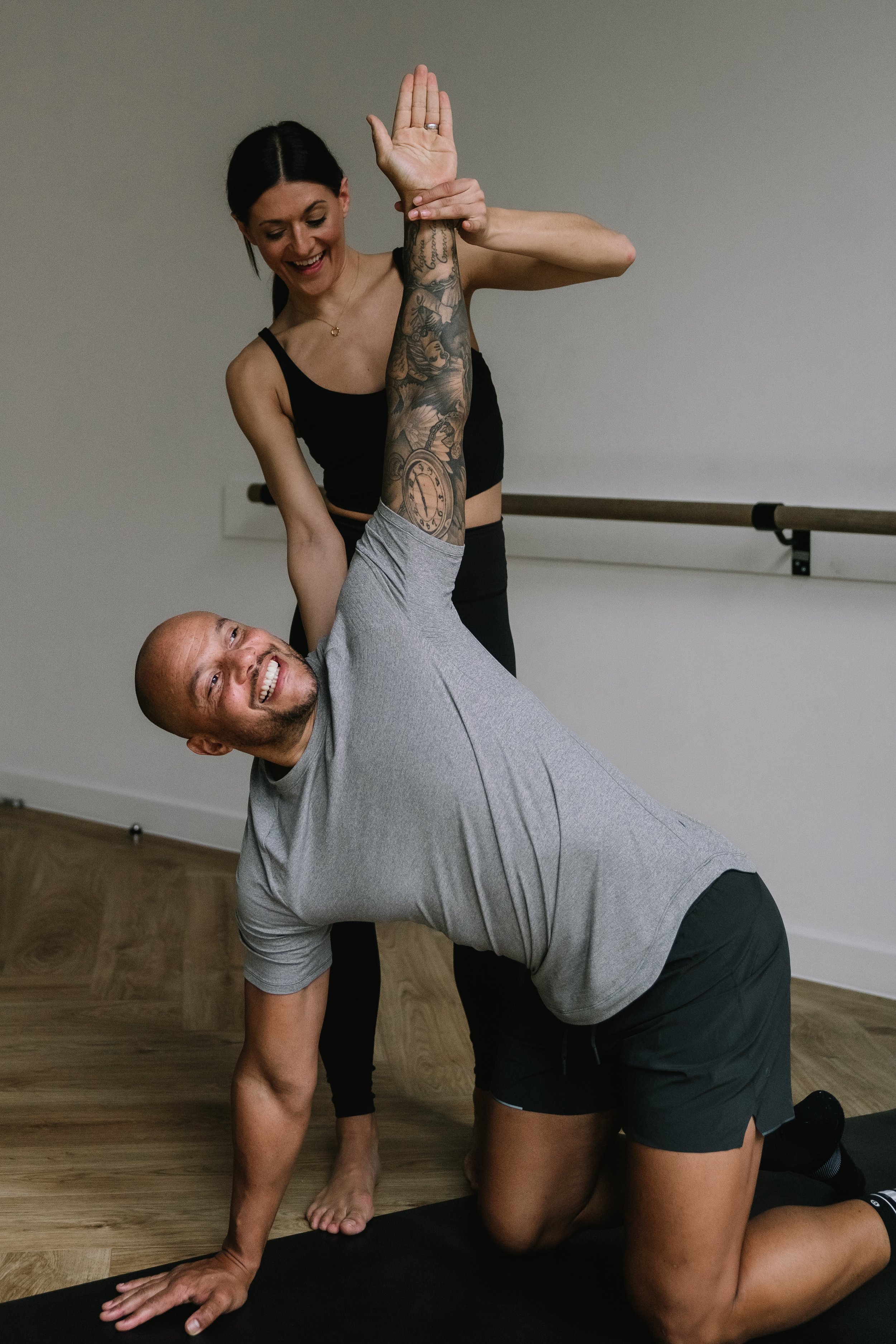Pilates and its Benefits
Created in the 1920’s, originally named contrology, pilates continues to grow in popularity in modern day. With a deep focus on connecting breath, body and mind, practicing pilates can make you feel more supported, stronger and flexible.
One of the biggest benefits is to prevent and rehabilitate injuries. Exercises focus on effectively restoring muscle function, activating deep stabilisers and evening out any imbalances in our muscular and skeletal system. This is particularly important after injuries or anytime our bodies have been under stress or physical changes. With a deep emphasis on core strength, alignment and functional movement patterns, it’s an inclusive workout that can help everyone get the best out of their body.
Joseph Pilates once said, “Change happens through movement and movement heals.” Our day to day lifestyle can influence our posture. For example, if you find yourself constantly slumped over a desk or staring down at your phone screen, a slouch is easily developed. Specific exercises performed efficiently can correct this by strengthening muscles around the spine and core, which in turn can relax shoulders, allowing the head and neck to move freely and relieves pressure from the hips and lower body. The more we do this during pilates exercises, the more it becomes a habit that over time leads to positive alignment changes.
But as well as being a physical exercise program Joseph’s method coordinates breath and mind focus to each movement. He was a big believer that mental and physical health were interrelated which is something we are learning more and more to be true.
Personally these are my favourite reasons to take up pilates:
Improved posture
Prevents injuries
Increases core strength
Balances muscular strength
Flexibility and deeper range of movement
Better coordination and balance
Promotes mindfulness and body awareness
Increases energy and boosts your mood
Helps with relaxation
I fell in love with teaching pilates because it’s not a one size fits all method. Coming from a dance background, it was a mandatory discipline I practised for body conditioning and to aid injuries often caused by overuse and repetitive demanding movement. In fact, dancers from the New York City Ballet were some of the original students of pilates, alongside war veterans and patients in hospital beds. This shows how pilates can be adapted for every ‘body’ and everybody at many stages of life.
So, whether you’re an avid runner, cyclist, golfer or want to feel more agile when playing with your children, pilates can give you the tools and support to continue a lifetime of movement that you love.
Gemma Formaston,
Pilates Instructor

